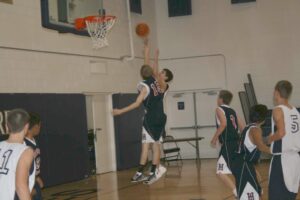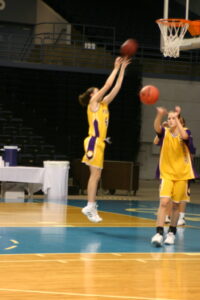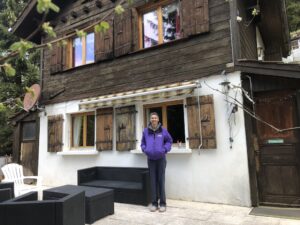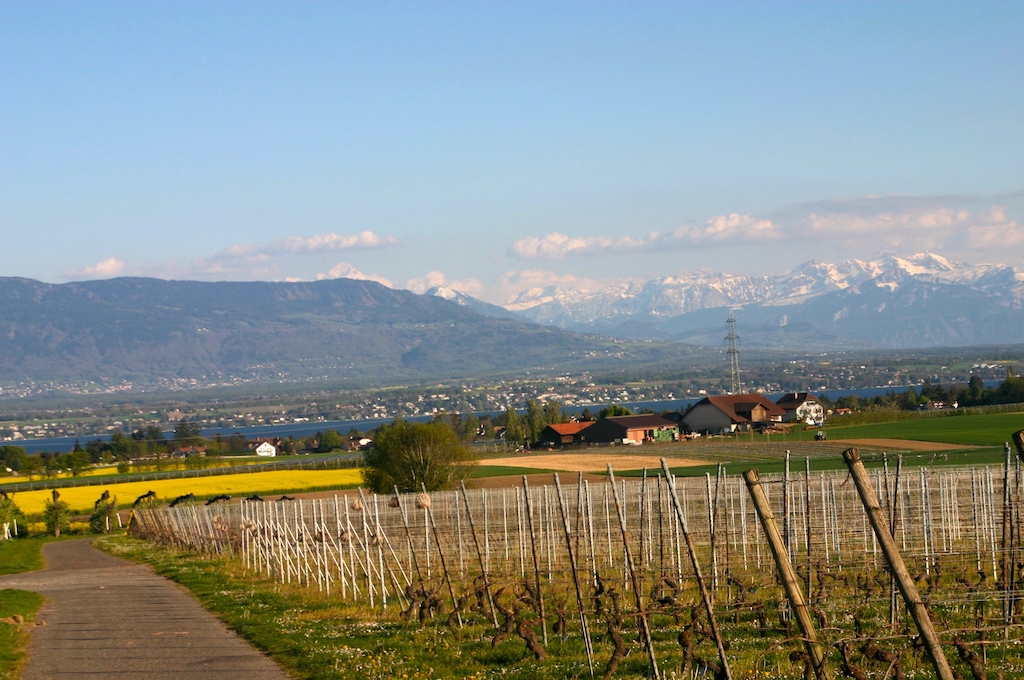 A few years ago, a coaching buddy, my son’s former club coach, asked me to work with his teenaged son to fix what he calls, “ Ugliest shot ever seen.”
A few years ago, a coaching buddy, my son’s former club coach, asked me to work with his teenaged son to fix what he calls, “ Ugliest shot ever seen.”
I was humbled that a former pro player thought enough of my coaching ability to seek my input. His kid could dribble a ball left handed as well as right before he could tie his shoes. He became one of the best ball handling and passing point guards in Switzerland.
But somewhere along the way, some well-meaning instructor probably tried to teach him too early the cockamamie, off balance, fall away, game highlight shots of NBA players, who only mastered this move after practicing proper form for a billion hours.
 Call me Old School, but fundamentals still matter especially when learning a new skill. I developed my shooting prowess because I learned the basics early on from Coach Dad, who passed down the protocol from his dad, Coach Mac.
Call me Old School, but fundamentals still matter especially when learning a new skill. I developed my shooting prowess because I learned the basics early on from Coach Dad, who passed down the protocol from his dad, Coach Mac.
Hour after hour, as dad rebounded my shots, he calmly repeated the same mantra, one-two step, load, lift, release, follow through.
 I perfected my shooting form during endless practice until “eyes on the rim, elbow in, feet squared, body balanced, right foot forward, knees bent, wrist cocked, follow through” became branded into my muscle memory.
I perfected my shooting form during endless practice until “eyes on the rim, elbow in, feet squared, body balanced, right foot forward, knees bent, wrist cocked, follow through” became branded into my muscle memory.
Kids never realize how much time it takes to learn a jump shot nor how much longer it takes to unlearn poor form once muscle memory takes over.
A jump shot is fine art.
Perfection takes practice.
But jump shot advice could apply to learning any new skill.
Keep your eye on the target.
Stay balanced. Feet, hips, shoulders, elbow, knee, ankle aligned.
Legs provide power, arms lift, fingertips guide.
Shoulders back. Chin up. Eyes forward. Soft touch. Stay focused.
When everything goes catawampus, start over.
 Hum a song. Get a rhythm.
Hum a song. Get a rhythm.
Snap the wrist.
Follow through.
Always finish.
Shoot. Rebound. Repeat.
Just like in life.
On your journey, step to meet the pass.
Whatever comes your way, don’t duck, rise to the challenge.
Read the defense and recognize obstacles blocking your way.
If you miss the goal, don’t give up, aim higher.
Never neglect to acknowledge the person who gave you the assist.
No one is alone in the game.


 Girlfriends get us through tough times, celebrate our victories and always got our back.
Girlfriends get us through tough times, celebrate our victories and always got our back. bunkmates’ early alarm clock with the darn dozer button. It never felt like a sacrifice until the basement flooded.
bunkmates’ early alarm clock with the darn dozer button. It never felt like a sacrifice until the basement flooded. harrowing miscarriage at an isolated cabin in the woods. When our children were still young enough to drag around, we gathered for “family reunions” on my stateside visits.
harrowing miscarriage at an isolated cabin in the woods. When our children were still young enough to drag around, we gathered for “family reunions” on my stateside visits. bourguignon", and "mousse au chocolat". Over champagne, we toasted to ISU, to friendship, to resiliency. We survived thyroid cancer, breast cancer, brain surgery, a car wreck and other calamities.
bourguignon", and "mousse au chocolat". Over champagne, we toasted to ISU, to friendship, to resiliency. We survived thyroid cancer, breast cancer, brain surgery, a car wreck and other calamities. We treasured memories of that special time as college students when we starred in our own life stories savoring lazy weekends, crazy keggers and Florida spring break.
We treasured memories of that special time as college students when we starred in our own life stories savoring lazy weekends, crazy keggers and Florida spring break.











 Every action from brushing my teeth, to getting dressed, to sitting at the table wears me out. I have muscle aches, headaches, air hunger, tightness in the chest, and shortness of breath. I force myself to walk everyday gasping for air at every incline as though I have run up the mountain.
Every action from brushing my teeth, to getting dressed, to sitting at the table wears me out. I have muscle aches, headaches, air hunger, tightness in the chest, and shortness of breath. I force myself to walk everyday gasping for air at every incline as though I have run up the mountain. health specialist, who dedicated his career to focusing on global health security. An internationally known global health leader, Jonathan (“Jono”) D. Quick, MD, MPH wrote in 2018 The End of Epidemics:
health specialist, who dedicated his career to focusing on global health security. An internationally known global health leader, Jonathan (“Jono”) D. Quick, MD, MPH wrote in 2018 The End of Epidemics: 


 Surviving in our rustic little chalet chiseled out of the side of the Jura Mountains, a few miles from the French border, is challenging as we adjust to living in the 1800s.
Surviving in our rustic little chalet chiseled out of the side of the Jura Mountains, a few miles from the French border, is challenging as we adjust to living in the 1800s.
 The staircase, so steep and narrow, must be navigated sideways and leads to 2 bedrooms. In our bedroom, the antique armoires are too narrow to hang things, so I rolled up our clothes and stored them in baskets under our bed.
The staircase, so steep and narrow, must be navigated sideways and leads to 2 bedrooms. In our bedroom, the antique armoires are too narrow to hang things, so I rolled up our clothes and stored them in baskets under our bed. Upstairs, lacks plumbing. I cannot safely navigate the stairs a dozen times a night to the bathroom. Instead, I use a porta potty balancing on a crate in the closet sized nook at the top of the stairs. The seat, sized to accommodate a toddler’s butt, is so tiny, I fear I’ll tumble head first down stairs every time I pee.
Upstairs, lacks plumbing. I cannot safely navigate the stairs a dozen times a night to the bathroom. Instead, I use a porta potty balancing on a crate in the closet sized nook at the top of the stairs. The seat, sized to accommodate a toddler’s butt, is so tiny, I fear I’ll tumble head first down stairs every time I pee.



 We watched the sun rise over the Alps from the bedroom and living room and saw it set behind the Jura Mountains from the guest room and kitchen.
We watched the sun rise over the Alps from the bedroom and living room and saw it set behind the Jura Mountains from the guest room and kitchen. We savored French favorites dining in front of winter fires and relished summer backyard barbecues, watching sailboats drift across the lake and the clouds float over the mountain range in the ever changing light.
We savored French favorites dining in front of winter fires and relished summer backyard barbecues, watching sailboats drift across the lake and the clouds float over the mountain range in the ever changing light.






